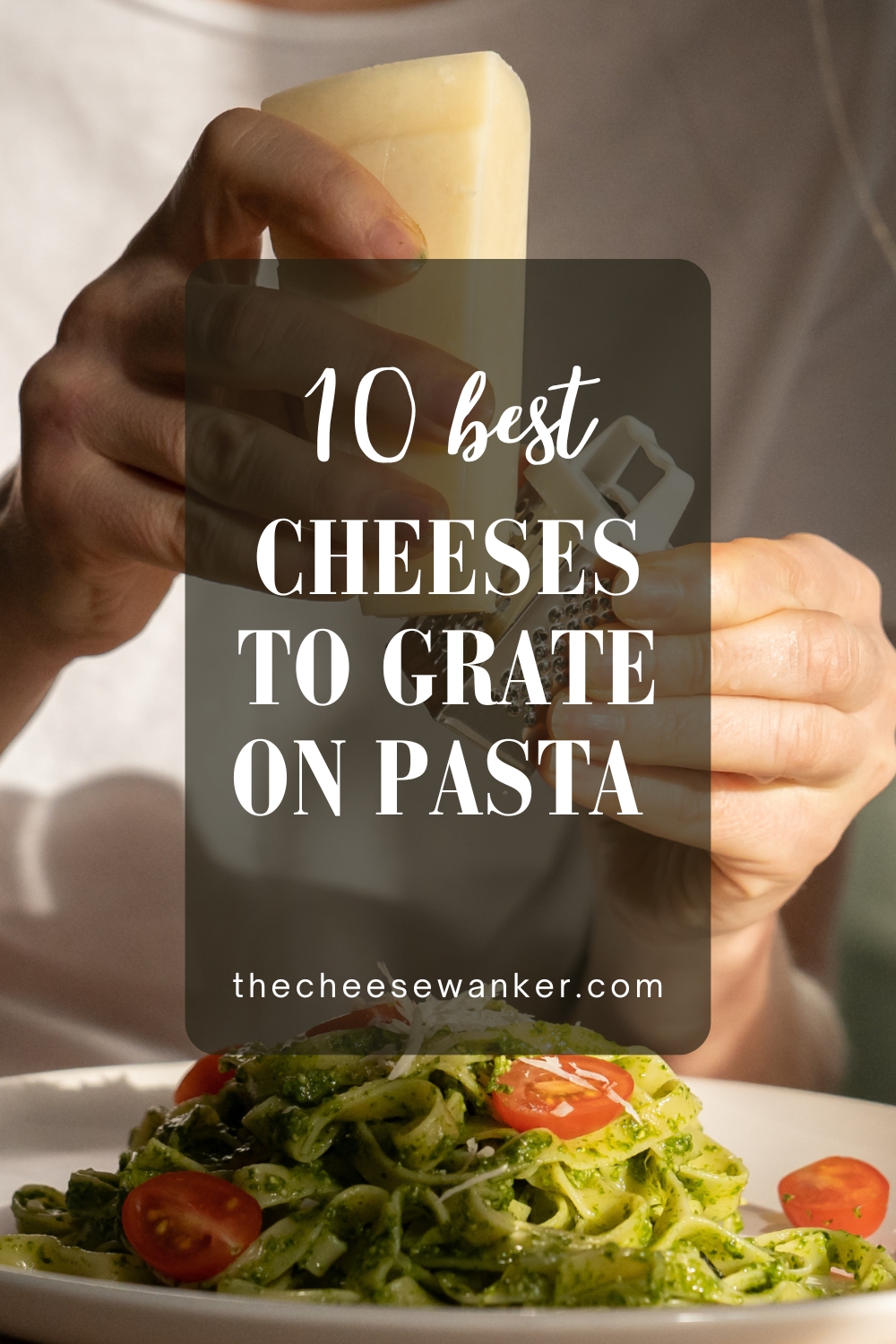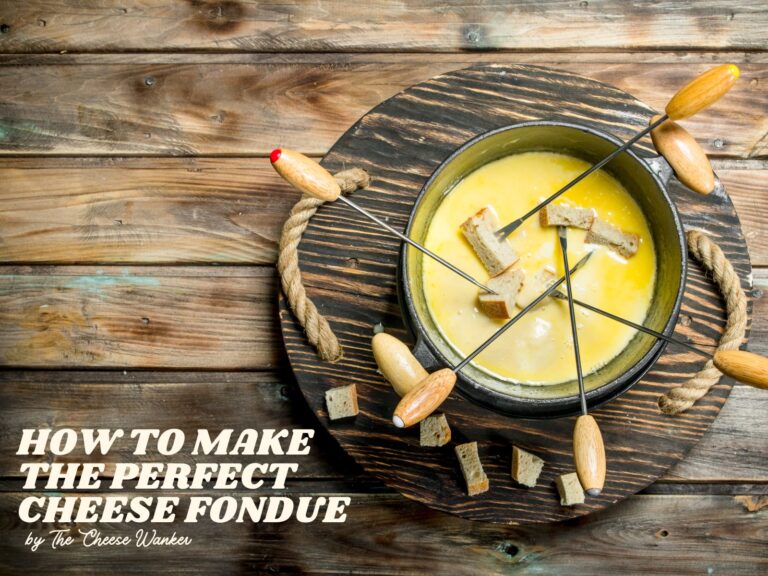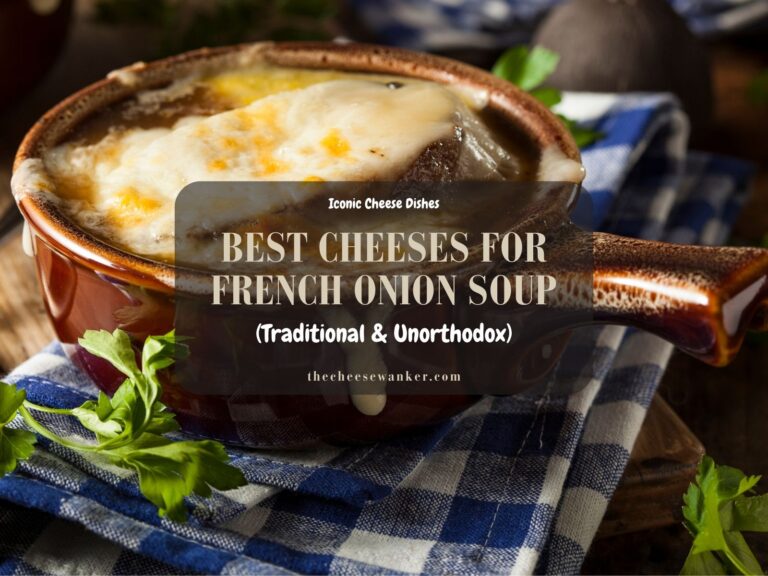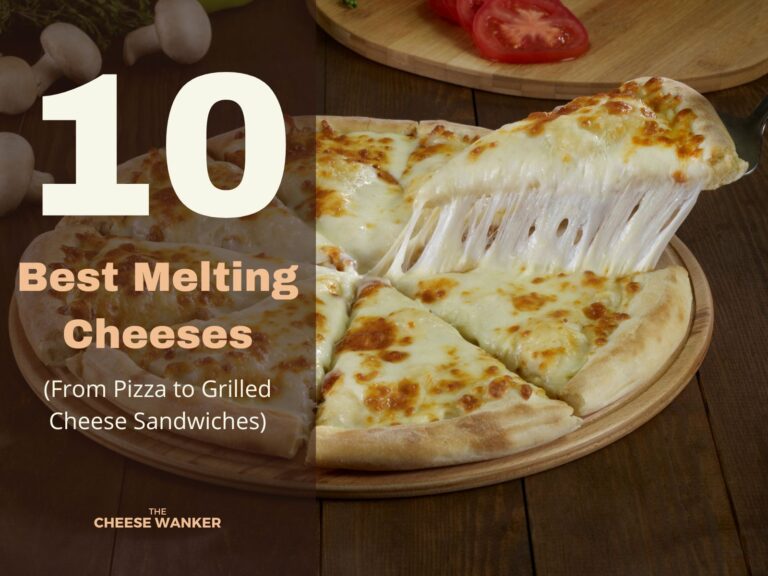Few culinary traditions are as cherished and celebrated as Italian pasta dishes. And one timeless practice that has stood the test of time is grating cheese over pasta. But which are the best cheeses to grate on pasta? Read on to discover our list.
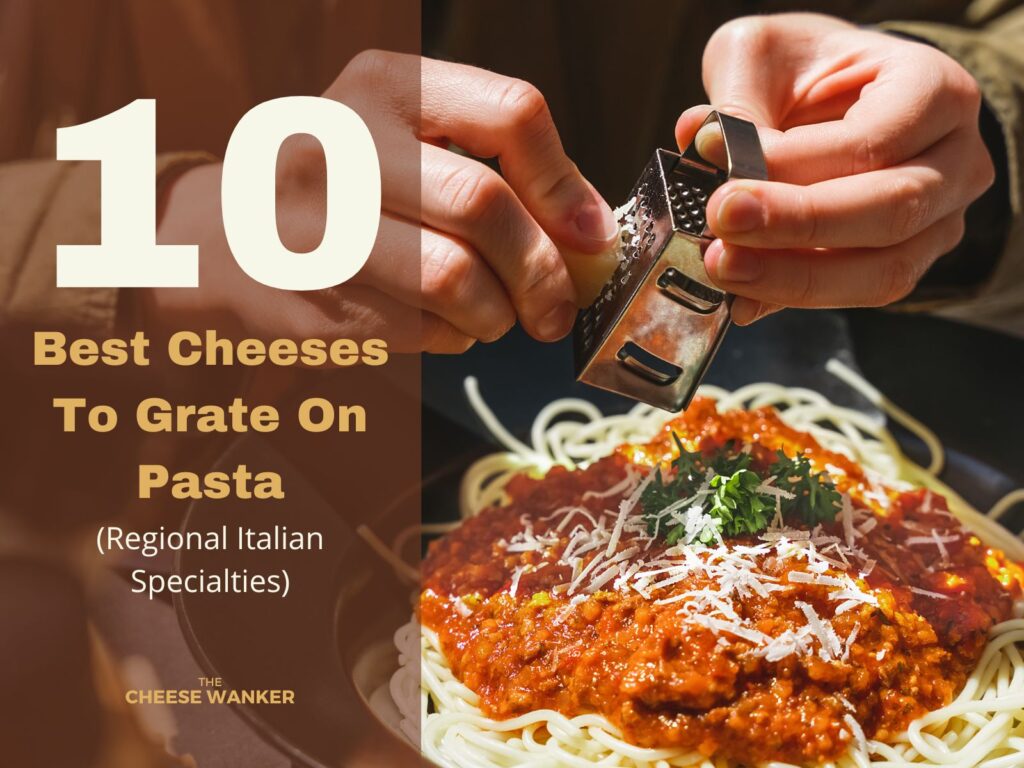
SEE ALSO: Discover our list of the most iconic cheese dishes from around the world →
History of grating cheese on pasta
Grating cheese on pasta is a practice that has a long history in Italian cuisine, dating back centuries. It’s an integral part of many traditional Italian pasta dishes, and the choice of cheese can vary depending on the region and local preferences.
Origins of pasta
A well-known legend attributes the introduction of pasta to Italy through Marco Polo’s travels in the late 13th century. However, the origins of pasta reach back even further.
Evidence of pasta-making dates as far back as the 4th century BC, with an intriguing discovery found within an Etruscan tomb. Inside this ancient tomb, depictions suggest that early inhabitants were engaged in what seems to be the preparation of pasta.
Early cheesemaking
Similarly, cheesemaking in Italy can be traced back to ancient times. This practice also likely started with the Etruscans and later evolved during the Roman Empire.
The Romans, in particular, were known for their cheese production and consumption. They developed various techniques for making and preserving cheese, including the use of salt and brine. And because they wanted long-lasting cheeses to feed their troops, they favoured hard, low moisture cheeses.
Hence was born the grana cheese.
Bringing cheese and pasta together
Benedetto Reguardati, a 14th century physician, displayed a keen interest in ferculis de pasta (Latin for pasta dishes). In his writings, he notes:
“For dishes with a viscous nature, cheese proves to be the most fitting companion. And it is best enjoyed when paired with macaroni, lasagne and other pasta delicacies.”
Benedetto Reguardati
This sentiment finds resonance in the Liber de coquina (medieval cookbook) from the 14th century. Indeed, the following quote further emphasises the importance of grated cheese in pasta dishes:
“It is essential to understand that when preparing lasagne and corzetti, a substantial quantity of grated cheese must be added”.
Liber de coquina
Regional varieties
Over time, different regions of Italy developed their own pasta dishes and cheese pairings.
For example, Pecorino is more commonly used in central and southern Italy, while Parmigiano Reggiano is prominent in the north.
Modern Italian cuisine
In modern Italian cuisine, grating cheese on pasta remains a fundamental step. Indeed, classic pasta dishes like Cacio e Pepe rely on the combination of pasta, cheese and other simple ingredients to create delicious meals.
Global influence
Italian immigrants brought their culinary traditions, including the practice of grating cheese on pasta, to various parts of the world. As a result, it has become a popular practice in Italian-American cuisine and beyond.
Today, grating cheese on pasta is not only a beloved tradition in Italy but also a worldwide phenomenon. Around the world, the choice of cheese can vary widely. Unsurprisingly, chefs and home cooks continue to experiment with different cheeses to create unique and delicious pasta dishes.
Which pasta dishes can you grate cheese over
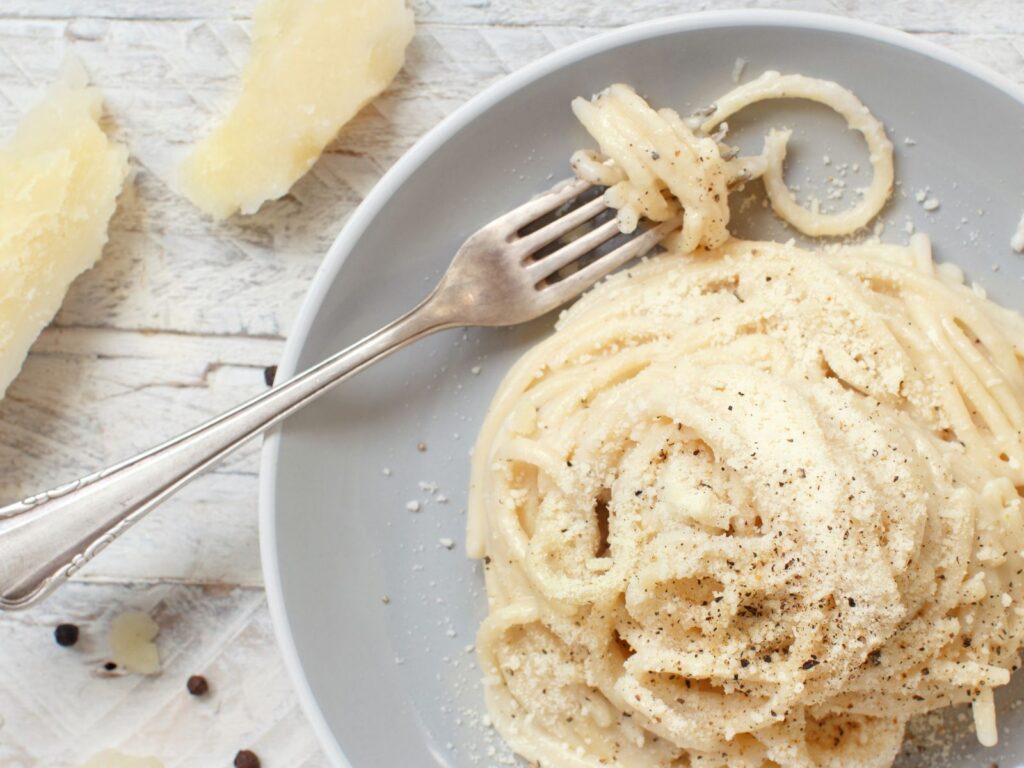
Before we tell you about the best cheeses to grate on pasta, let’s have a look at three pasta dishes which are exceptionally suited to cheese.
1. Cacio e Pepe: Hailing from Rome, Cacio e Pepe is a simple yet flavourful pasta dish. It features al dente spaghetti coated in a creamy sauce made from Pecorino Romano and freshly cracked black pepper.
2. Fettucine al Burro: This pasta dish’s name translates to “fettuccine with butter” in Italian. It is a delightful and straightforward pasta dish celebrated for its simplicity and the purity of its flavours. This classic Italian preparation consists of wide fettuccine noodles tossed with butter, often accompanied by freshly grated Parmigiano Reggiano and a dash of black pepper.
3. Rigatoni all’Amatriciana: Originating from Lazio, this spicy pasta dish features large rigatoni tubes dressed in a sauce made from guanciale, tomatoes and red chilli flakes. Moreover, a generous grating of Pecorino Romano cheese melts into the sauce, balancing the spiciness with creaminess and depth.
Of course, you can grate hard cheeses over almost any pasta dish. Because, as we all know, cheese makes everything better!
10 best cheeses to grate on pasta
The choice of cheese may vary depending on the recipe and regional preferences, but let’s have a look at 10 of the best all-rounders.
1. Parmigiano Reggiano
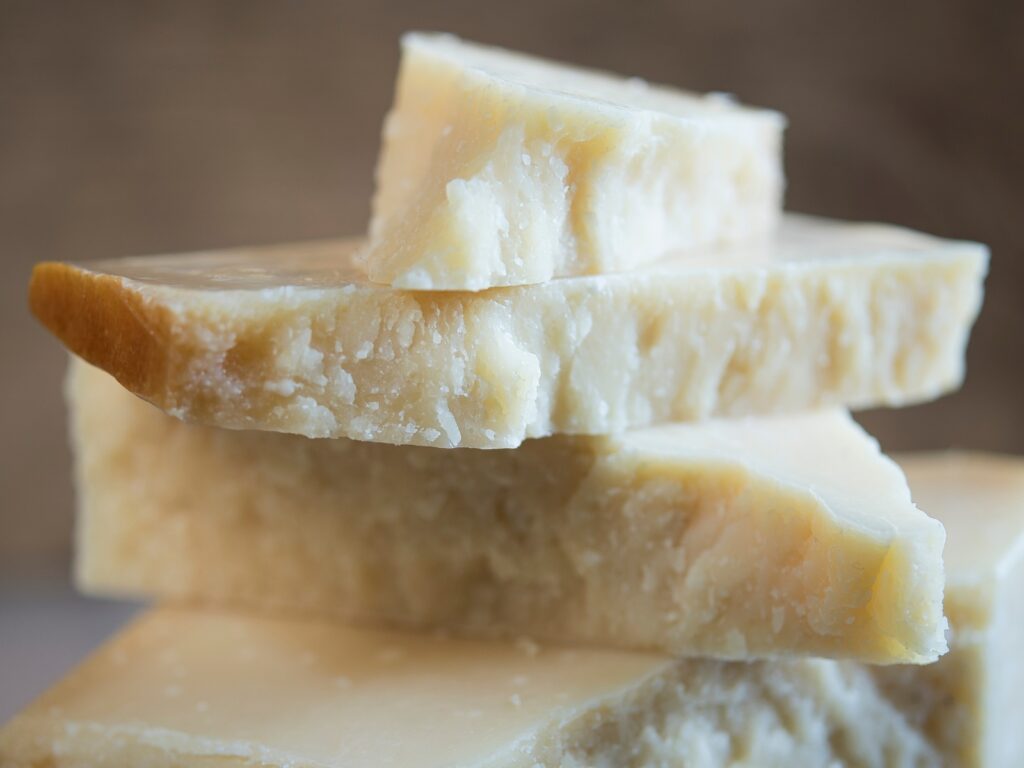
Parmigiano Reggiano, often hailed as the “King of Cheeses”, is an Italian cheese with a rich history dating back nearly 1,000 years. Produced exclusively in the Emilia-Romagna and surrounding regions of Italy, this hard, aged cheese is renowned for its exceptional quality.
Parmigiano Reggiano is made from unpasteurised cow’s milk and aged for a minimum of 12 months. Over time, the cheese develops a crumbly texture and a nutty, savoury and slightly fruity taste.
It is a quintessential cheese for grating on pasta, imparting an umami-rich complexity to dishes like Pasta Primavera and Fettuccine al Burro.
2. Pecorino Romano
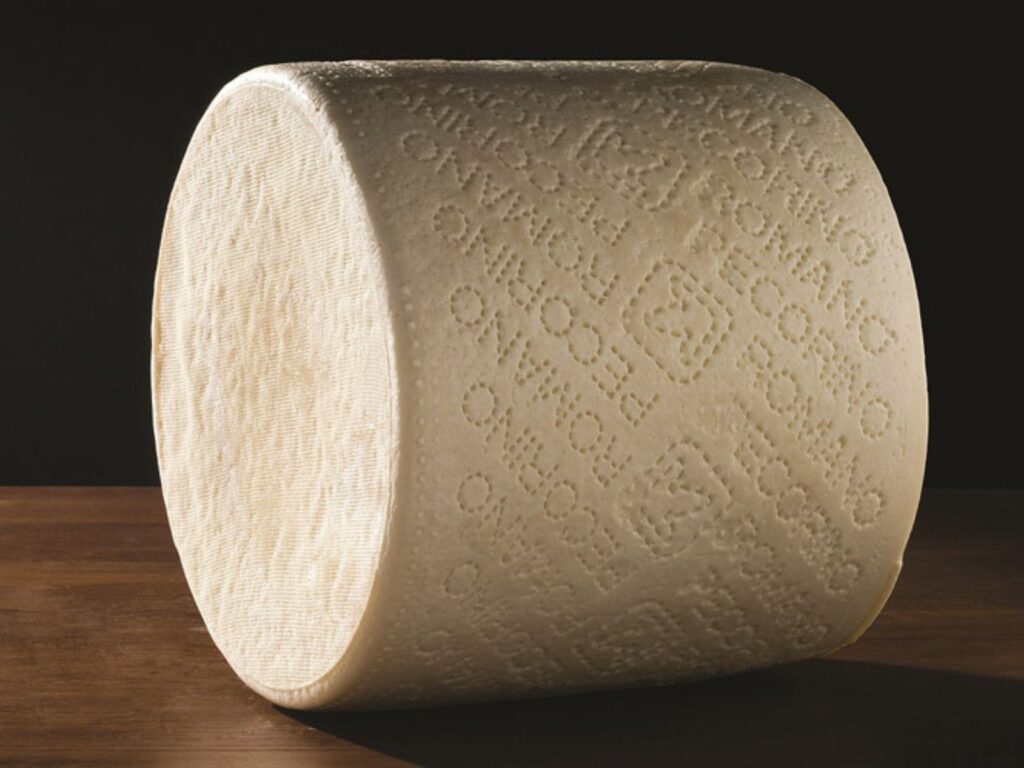
Next, we have Pecorino Romano, a beloved Italian cheese. Made from sheep’s milk, Pecorino hails from the region of Lazio and Sardinia. And it’s renowned for its robust, savoury and tangy taste.
Pecorino Romano is often grated generously over pasta dishes like Cacio e Pepe, where it creates a creamy and savoury sauce.
3. Grana Padano
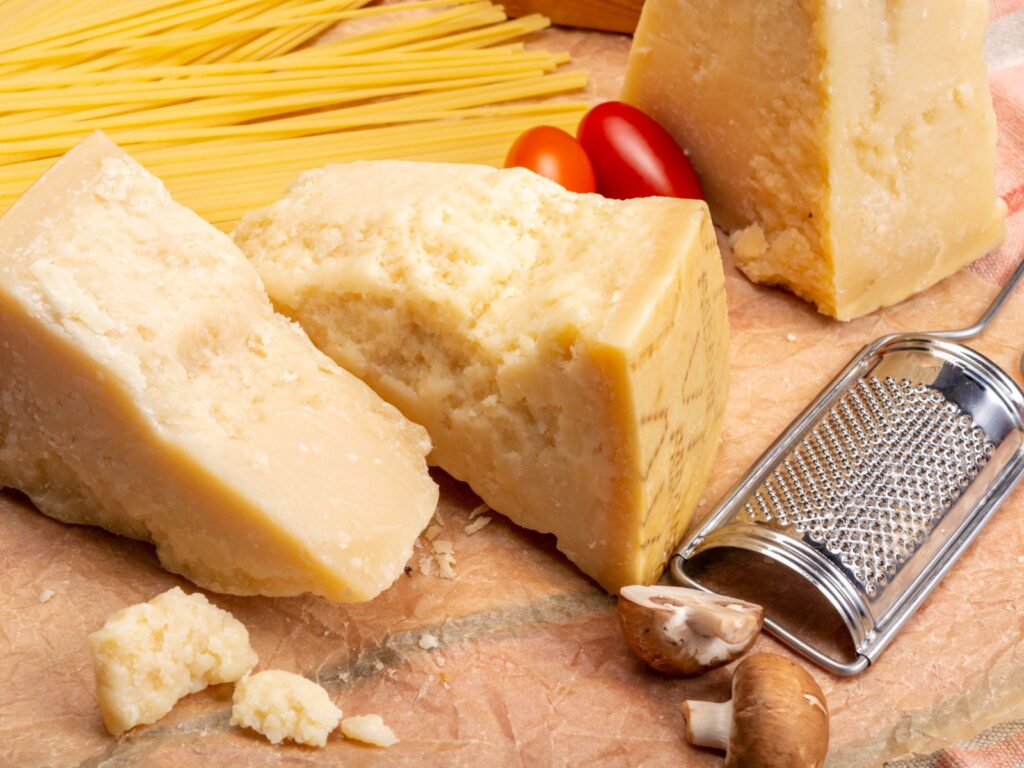
Our next grana-style cheese for pasta is Grana Padano. This hard, aged cheese is produced in the Po Valley region of northern Italy and is a close relative to Parmigiano Reggiano.
With a granular texture and a nutty, slightly sweet taste, Grana Padano is a versatile cheese. Its grated form adds a delightful depth of flavour and a pleasing texture to classic Italian dishes like Spaghetti Carbonara.
4. Asiago
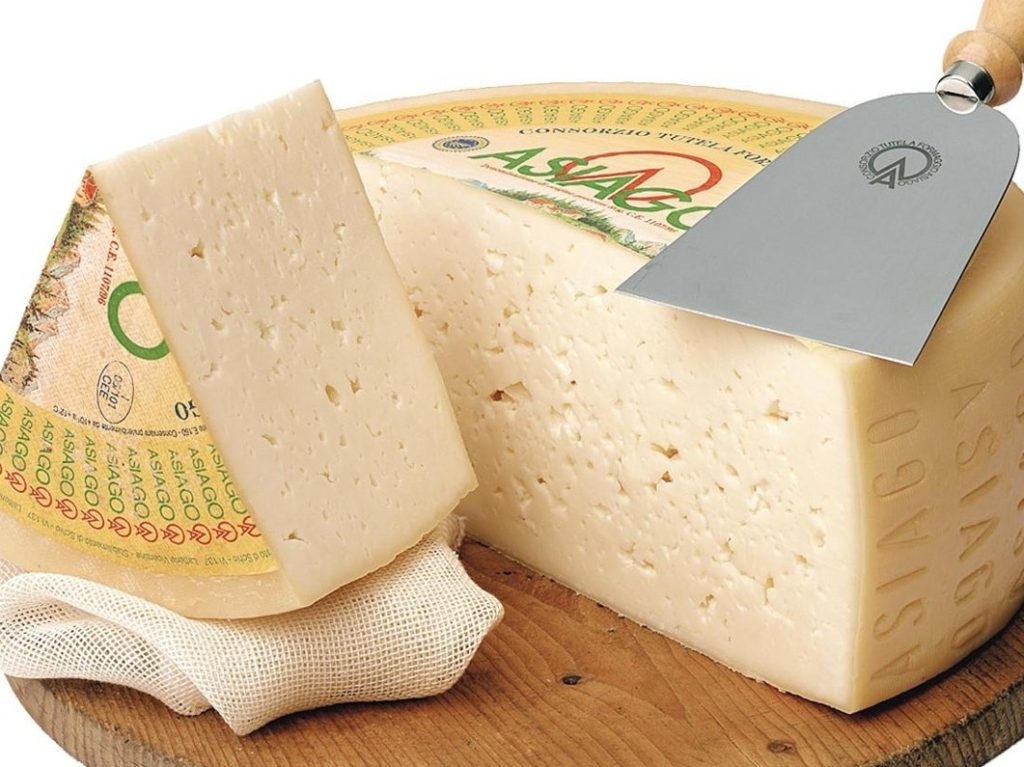
Hailing from the Veneto and Trentino-Alto Adige regions of Italy, Asiago cheese comes in two main varieties: Asiago Fresco (young) and Asiago d’Allevo (aged).
Asiago Fresco is semi-soft with a mild and creamy flavour, making it a delightful cheese to melt over pasta dishes for a smooth and delicate finish. On the other hand, Asiago d’Allevo, with its firm texture and nutty, slightly tangy taste, adds depth and character when grated.
Whether it’s used as a melty topping for baked pasta or as a grated garnish for dishes like Fettuccine al Burro, Asiago’s versatility makes it a valuable ingredient that can infuse a range of Italian pasta creations with distinct flavour and texture.
5. Fiore Sardo
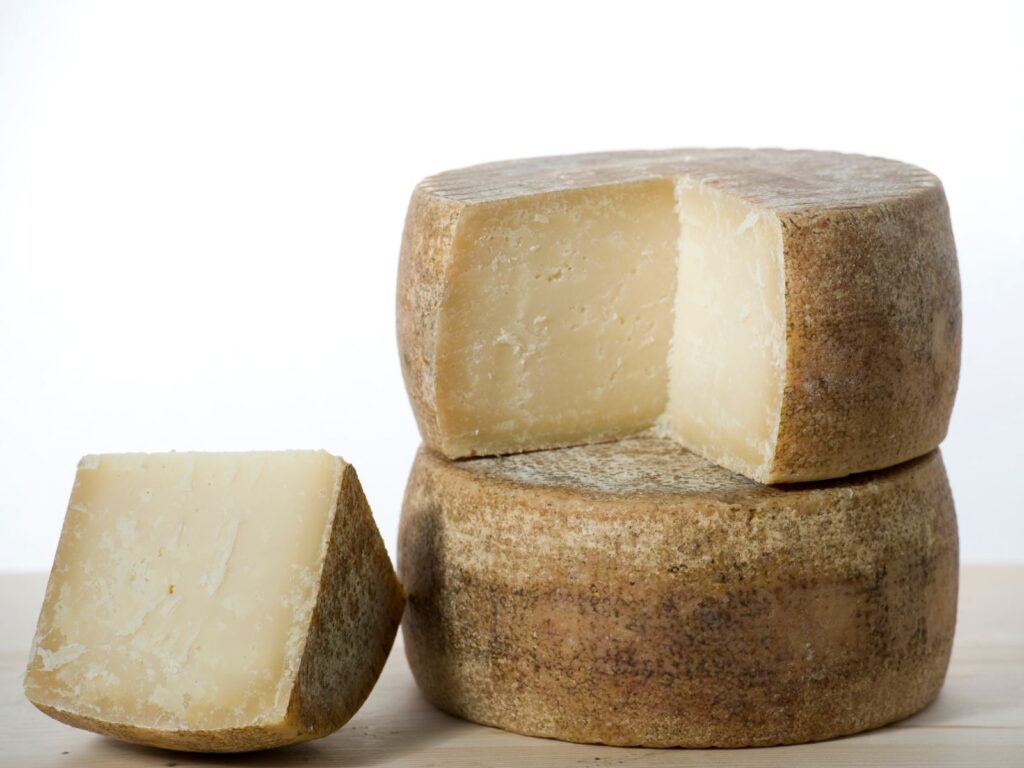
Originating from the island of Sardinia, Fiore Sardo is made from sheep’s milk and holds a distinctive place in Mediterranean cuisine.
Fiore Sardo has a semi-hard texture and a characteristically smoky and slightly spicy taste, which arises from the traditional smoking process over juniper branches. Grated Fiore Sardo adds an enticing depth to pasta dishes like Gnocchi alla Campidanese, where its smokiness and complexity shine.
6. Caciocavallo
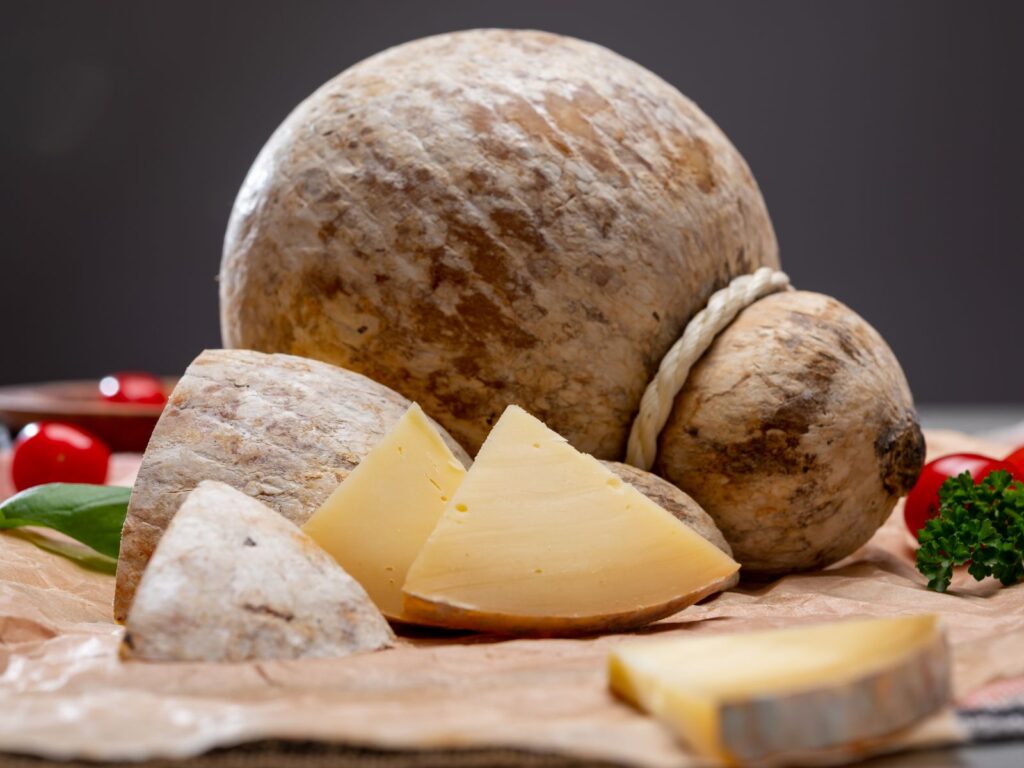
Caciocavallo is an esteemed Italian cheese known for its distinctive shape and robust flavour. This aged pasta filata cheese is primarily produced in southern Italy, particularly in regions like Campania, Calabria and Sicily.
Its name, “Caciocavallo”, translates to “cheese on horseback”, referring to the traditional method of hanging the cheese to age, often in pairs. Caciocavallo has a tangy and slightly salty taste, which intensifies with ageing.
Without a doubt, grated Caciocavallo is a wonderful addition to pasta dishes, contributing a savoury depth. Whether used in recipes like Pasta alla Norma or Pasta con le Sarde, Caciocavallo’s bold and complex flavour elevates the pasta to a new level.
7. Provolone Piccante
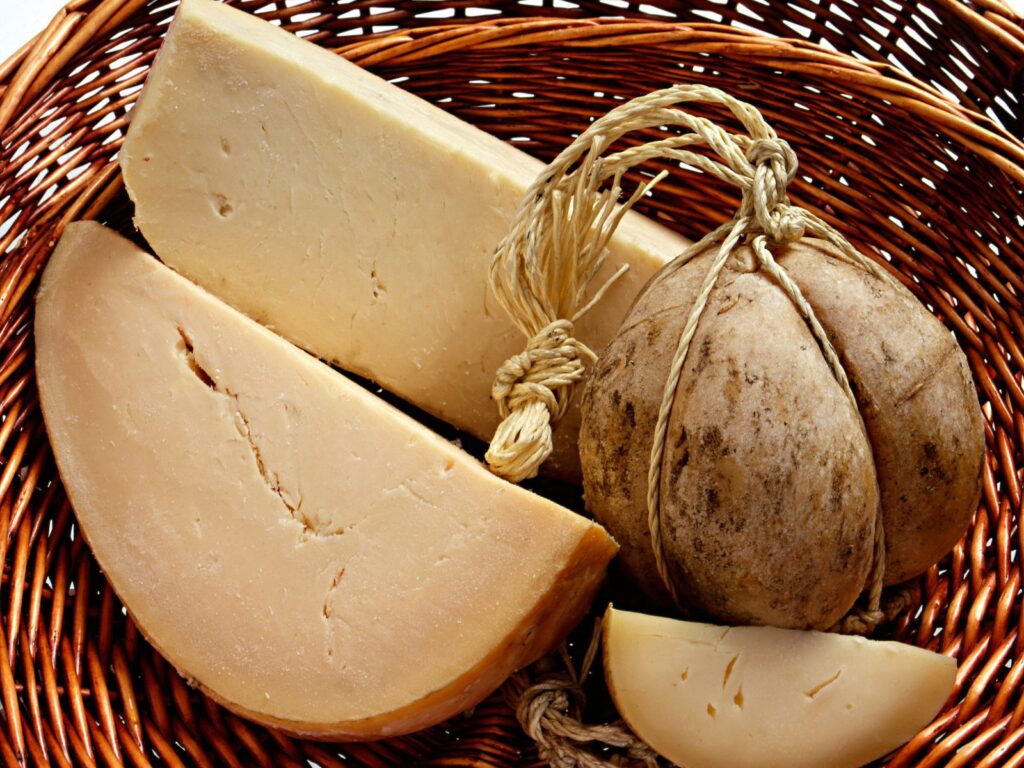
At number 7, we have Provolone Piccante, another aged Italian pasta filata cheese. Provolone is produced in various regions of Italy, with the “Piccante” variety being a particularly tangy and piquant version.
With a pale-yellow interior and a firm, smooth texture, Provolone Piccante adds a bold flavour when grated over pasta dishes. Its intense taste is ideal for enhancing the complexity of pasta creations like Baked Ziti.
The cheese’s distinctive organoleptic properties, characterised by its spiciness and savoury notes, makes it a standout choice for those seeking to infuse their pasta with an extra layer of flavour and excitement.
8. Piave
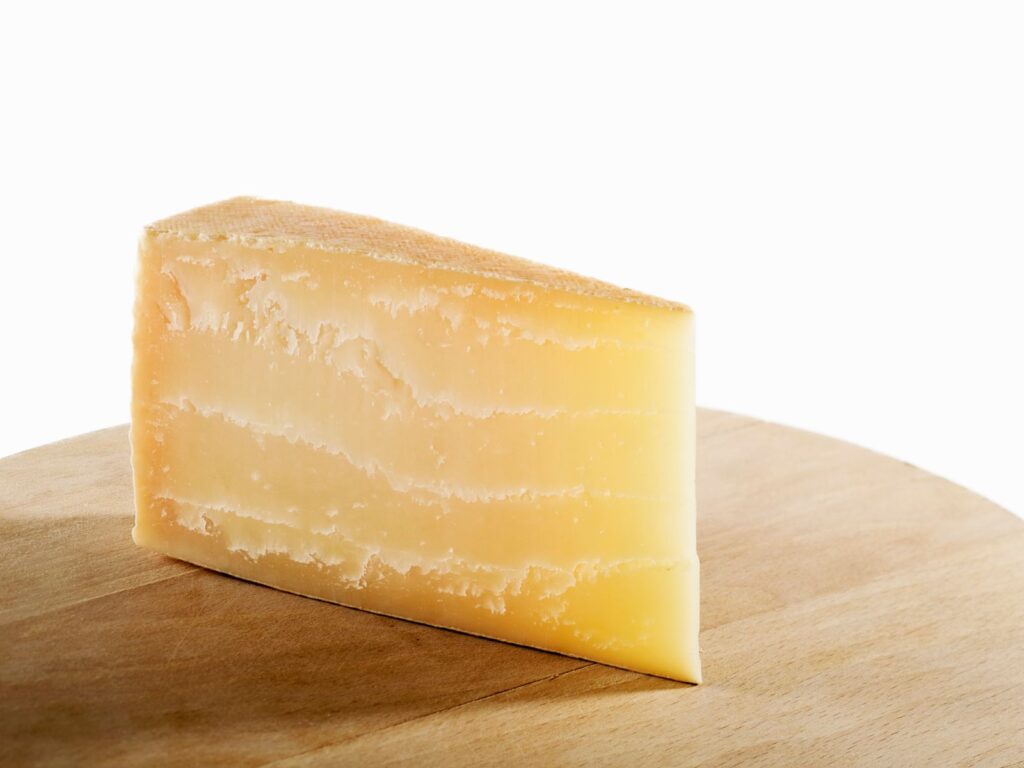
Next, we have Piave, another captivating Italian hard cheese. Originating from the Veneto region in northern Italy, Piave cheese comes in various ageing stages, with Piave Vecchio being a well-known aged variety.
This semi-hard cheese presents with a pale-yellow paste and a firm, crumbly texture that becomes more granular as it matures. Grated Piave cheese adds a delightful complexity to pasta dishes, imparting a sweet, nutty, and fruity taste profile.
Whether used as a topping for classic pasta dishes or as an ingredient in baked pasta creations, Piave’s unique flavour and versatility make it a cherished choice for enhancing Italian pasta dishes with a touch of elegance and depth.
9. Ricotta Salata
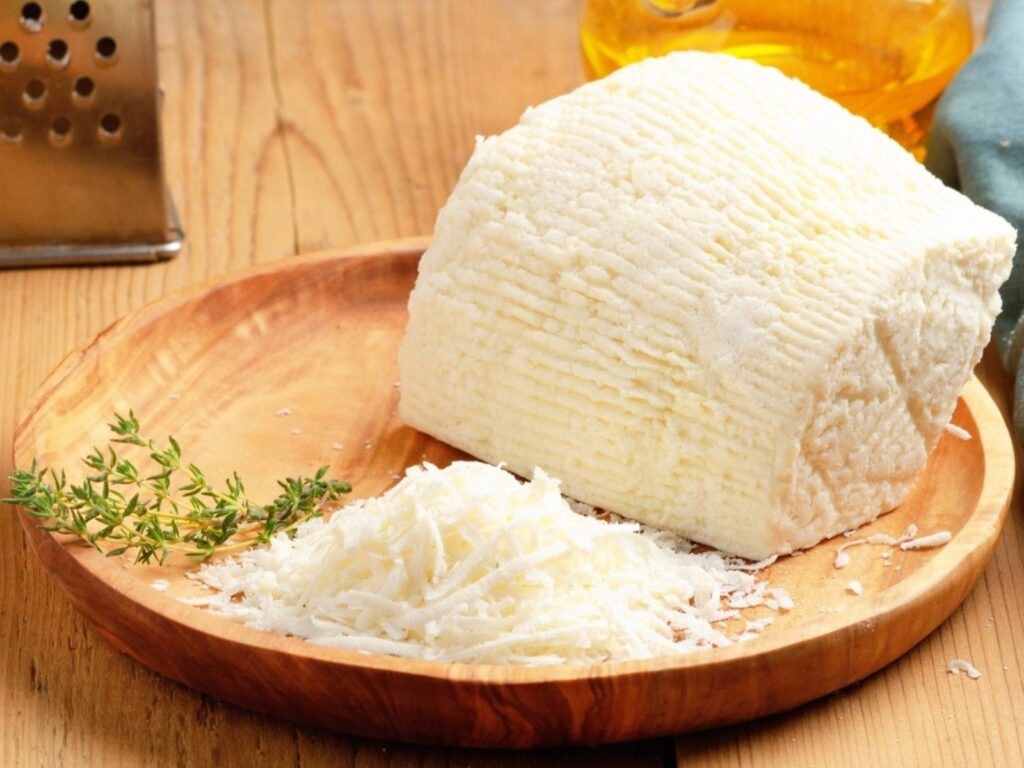
Ricotta Salata is a distinctive Italian cheese renowned for its crumbly texture and salty, tangy flavour. Made from sheep’s milk and whey, this cheese undergoes a process of salting and ageing, resulting in a firm and dry consistency that is perfect for grating.
Ricotta Salata, which translates to “salted Ricotta”, is often grated over various Italian pasta dishes, such as Pasta alla Norma or Spaghetti Aglio e Olio, to add a salty and slightly nutty dimension.
Its ability to elevate pasta with a pleasing contrast of flavours and textures makes it a cherished ingredient in Mediterranean cuisine, offering a delightful touch of saltiness and creaminess to pasta creations that’s both unique and unforgettable.
10. Gorgonzola Piccante
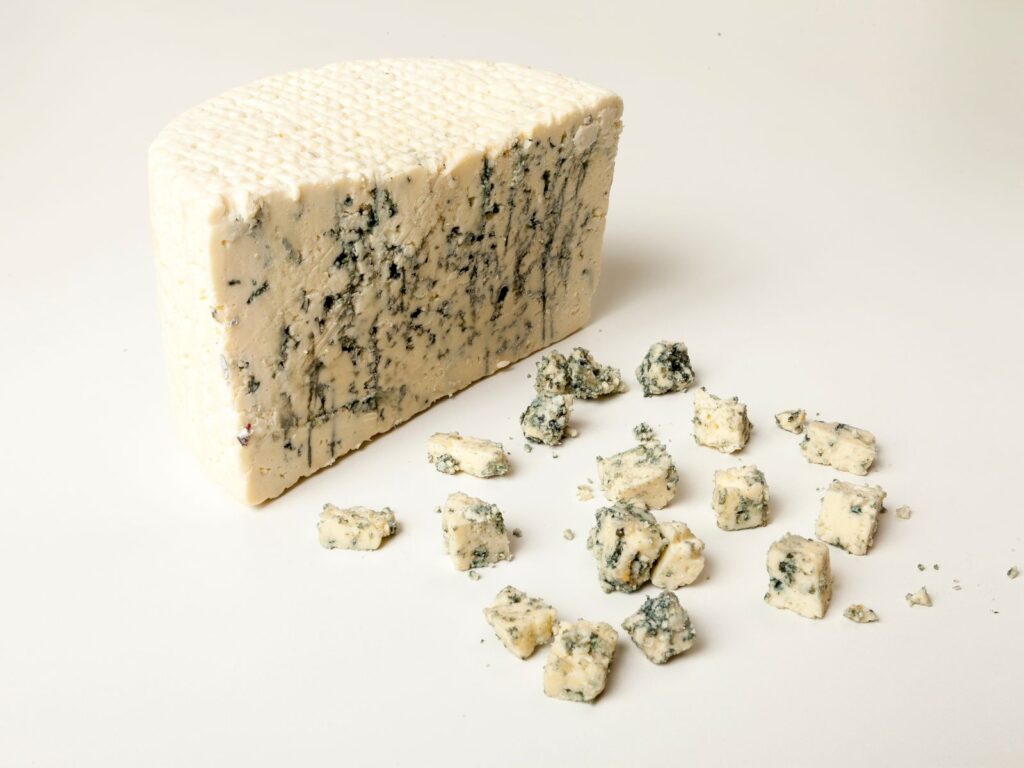
Our final best cheese to grate on pasta is Gorgonzola Piccante, an iconic Italian blue cheese known for its bold and piquant flavour. This creamy and crumbly cheese hails from the Lombardy and Piedmont regions of Italy.
With its distinctive blue-green veins and a rich, tangy taste, Gorgonzola Piccante is a versatile cheese used for grating over pasta dishes, among other culinary applications. Its moderate to strong blue flavour pairs beautifully with sweet and earthy elements, making it an excellent choice for classic dishes like Pasta con la Zucca alla Napoletana.
In this dish, Gorgonzola Piccante’s spicy and tangy qualities complement the sweetness of roasted pumpkin, creating a harmonious blend of flavours and textures that transform a simple pasta dish into a gourmet delight.
How much cheese should you use?
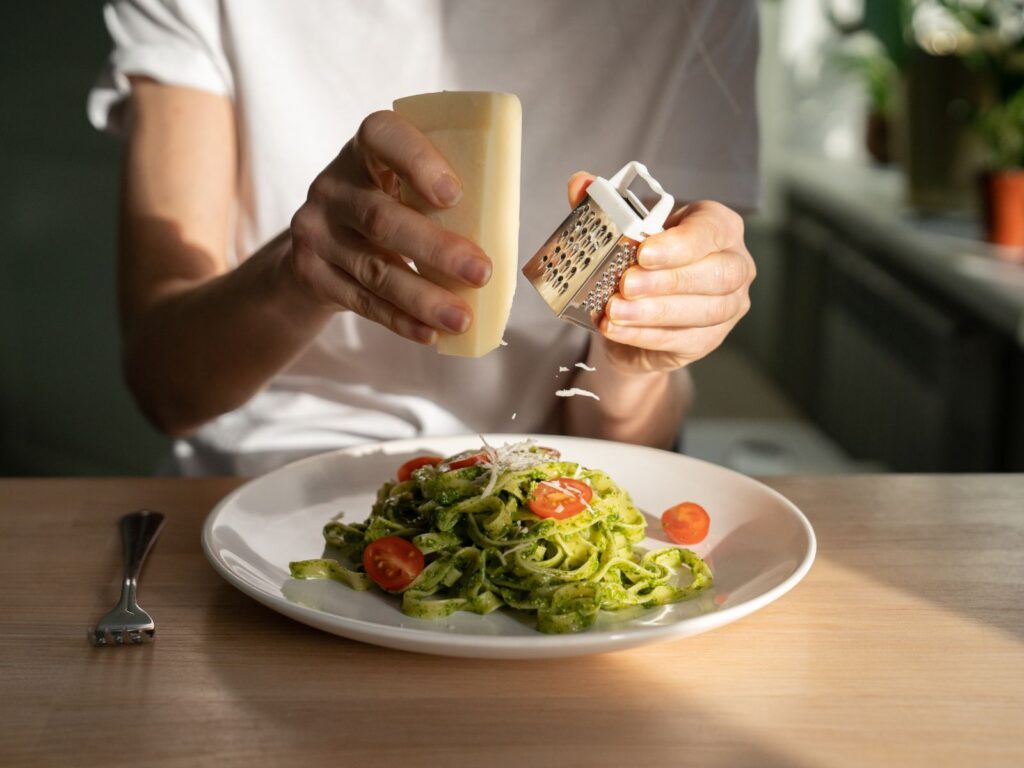
Now that you know the best cheeses to grate on pasta, let’s get to the second most important point.
The amount of cheese to grate on pasta can vary depending on personal preference, the type of cheese you’re using, and the size of the portion. Here are some general guidelines to help you determine how much cheese to grate:
1. Start with a small amount
It’s best to start with a modest amount of grated cheese and then add more as needed. This allows you to control the cheese-to-pasta ratio to suit your taste.
2. Consider the type of cheese
Hard cheeses like Parmigiano Reggiano and Pecorino Romano have a strong flavour, so a little goes a long way. You’ll typically use less of these cheeses compared to milder ones like Asiago or Ricotta Salata.
3. Rule of thumb
A common rule of thumb is to use approximately 1 to 2 tablespoons of grated cheese per serving. This provides a balanced amount of flavour without overwhelming the dish.
4. Adjust to taste
Taste your pasta before and after adding the grated cheese. If you feel it needs more cheese to achieve the desired flavour and creaminess, go ahead and grate a bit more.
5. Consider the dish
Some pasta dishes, like Cacio e Pepe, may require more cheese to balance textures, while others, like Pasta Primavera, benefit from a lighter sprinkling for added flavour.
6. Presentation
Keep in mind that some people enjoy a generous mound of grated cheese on top of their pasta for both flavour and visual appeal. Others prefer a more subtle sprinkle.
Ultimately, the amount of cheese to grate on pasta is a matter of personal taste. Feel free to experiment and adjust according to your preferences, and don’t be afraid to ask your guests how much cheese they prefer when serving a group.
Conclusion
In the world of pasta, cheese isn’t just an optional topping; it’s a flavoursome embrace that elevates each dish to new heights.
In this exploration of the best cheeses to grate on pasta, we’ve uncovered a symphony of tastes, traditions and textures. From the timeless classics like Parmigiano Reggiano to the criminally under-rated Caciocavallo, there’s a cheese to suit every craving and culinary adventure.
As you embark on your own pasta adventures, remember that the best cheese to grate ultimately depends on your personal tastes and the specific dish you’re preparing. So, grab your favourite cheese grater and start exploring the world of Italian pasta, one delightful sprinkle at a time.
Buon appetito!
